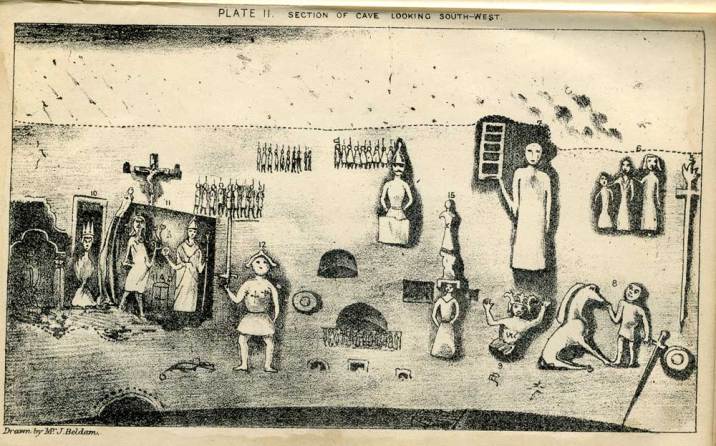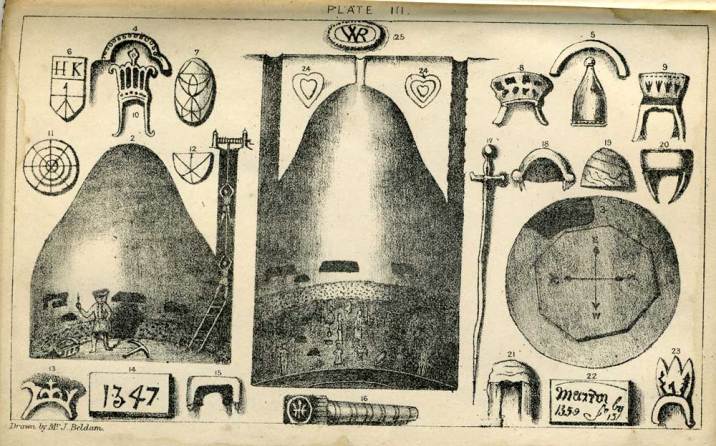Can there be anything more civilised than a municipal bench?
You will have favourite benches. The British Isles is peppered with them; many with inscriptions in memory of a loved one who knew the place and loved it well. There is one in our forest. It is called, locally, Pip’s bench. It commemorates a man who loved the woods and would walk them with his dog. He is gone, but we remember him every time we sit down to take a load off and watch the dog scavenge.
Royston, Hertfordshire, some 260-odd years ago, decided its streets needed new furniture.
One of its markets was being tarted up, and so they wanted a bench for folks to sit on and rest from their consumer exertions. It’s a modest project but one which has the aforementioned charms: we love a place to sit down and watch the world go by, and the women selling butter and cheese were no exception.
The market in question was The Butter Market, and the bench would be sited at the corner of the old Roman Road, Ermine Street, at its intersection with a road called Icknield Way.
So, one day in 1742, the workmen turned up with their tools and began to make preparations. Their first action was to bang a sturdy post into the ground as an anchor.
The post almost completely disappeared.
When they investigated, it was obvious what the problem was. There was a millstone in the way. And cursing under their breath, but most courteous over it, the workmen began the arduous task of digging out the old millstone.
Except that the millstone was not just any millstone. It was an entrance.
What they discovered that day in 1742 has baffled prehistorians and historians for centuries. For the millstone hid a passage.
It was more than half filled with earth, but rumours of buried treasure soon sorted that out. Locals had that out in a jiffy, though no gold was ever found and much of the rich archaeological evidence was destroyed. But when they had finished, they were confronted with a great, bell-shaped cavern hollowed out in the rock, there beneath the Butter Market in Royston. 17 feet in circumference, and 26 feet high, no-one had ever seen – or indeed, would see again – anything quite like it.
And the pictures of the wall were compelling indeed. Mediaeval, they were early Christian in character. Stone sculptures: St Katharine, the Holy Family, St Lawrence, and someone with a drawn sword – could this be St George? The fanciful talk styles this a cave for the Knights Templar; the more reserved say it is a cell for a monk who wished to escape the world. Others still point to Masonic symbolism on the wall.
And odds are, we will never know for sure.
It has fascinated many: and if you ever find yourself in the town on the borders of Hertfordshire and Cambridgeshire, on a Summer weekend, it would be well worth seeking out the little passage, dug in 1790, to guide tourist into the subterranean world beneath.


How fascinating to dream of uses for such a little cave. 🙂 Thanks for sharing.
Pleasure, Shelley. My money’s on a monk’s retreat.
Fascinating! Wonder what it was used for…
Who knows, Stephanie? I’d love the Templar talk to be true, but I think it’s an outside chance…
It has the look of one of the dreadful “oubliette” dungeons, down into which prisoners were lowered (or thrown) and “oublie” (no accents on my keyboard). Wonderful old drawings.
Here’s one of the Bastille oubliette: http://en.wikipedia.org/wiki/File:Oubliettes.Bastille.png *shudder*
Weird!
‘… more things in heaven and earth …’ In this case, ‘in earth’, indeed!
Quite. Strange business.
I love these subterranean surprises and a favorite of mine is Mary King’s Close. Wonderful!
A wonderful example of an undederground settlement, Chris: http://en.wikipedia.org/wiki/File:Marykingsclose006.jpg
Fascinating, Kate, in a morbid way. I can only imagine it as a place someone was holed up to die. I don’t know why.
We will never know for sure, Andra: The earth was not taken out in any systematic way, but in rather a scramble for loot, I believe.
How fascinating. I wonder if it was someone’s place of safety and shelter from something truly threatening, or a simple hideaway for peace and quiet. The Masonic images and thoughts about Knights Templar is fascinating and certainly helps add to the intrigue surrounding those mysterious gatherings. I can imagine the excitement when it was first discovered and it always makes me wonder what more might there be that simply was covered over with concrete and asphalt. We have always been too quick to sweep away the past without looking at it carefully.
It does smart to think of all those layers of archaeology dismissed so peremptorily, Debra.
Maybe that’s the world’s first “Man Cave!” 😛
A spot for a married lad to get away from the wife and kids for a bit and just kick back and relax.
Ha! Maybe there were a few tools in the rubble that was taken out; some old batteries and sundry wire….
Ooh don’t work too far away from Royston, may have to go and see 🙂
Oooh, do post once you’ve been….
Will do 🙂
We need to “bench” entire US govt leadership.
Indeed, Carl.
What an interesting story…or rather all the stories I am making up in my mind about what really happened! As always an enjoyable read!
It does start one wandering, doesn’t it, Solveig? Thanks as always for reading.
This post prompted me to research Icknield Way. It still exists! I love that name. It rolls off the tongue like reciting verse with a popcorn kernel lodged in one’s throat.
You’ve probably already found this: http://en.wikipedia.org/wiki/Icknield_Way : I found the High Street on Streetview – http://www.instantstreetview.com/2olxmqz3exkywz1j1zr5z2u very pretty place. Haven’t tracked down the junction with the A505. A little site visit is in order, I think!
I wonder if this is something from the dark ages?
Intriguing thought, Tandy!
Interesting, indeed, Kate. I always imagining finding such things, then, I come in and have a cookie. Sigh.
Seems “sit down” history is a new direction for study.